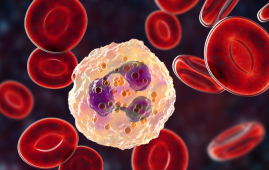

Per- and polyfluoroalkyl substances (PFAS) continue to pose widespread public health challenges due to their long-lasting presence in the environment and the human body. Individuals exposed to PFAS-contaminated water can retain these chemicals in their bloodstream for several years. A recent study from the University of Gothenburg now suggests that two commonly prescribed cholesterol-lowering medications, cholestyramine and colesevelam, may significantly accelerate the body’s ability to remove PFAS.
Learn more about Toxicology and Infectious Diseases Challenges
PFAS Exposure Community Offers Key Insights
The study focused on residents of Ronneby, Sweden, where municipal drinking water was contaminated for decades due to the use of aqueous film-forming foam during routine firefighting drills at a nearby air force base. Although the water source was replaced in 2013, many residents continued to show high PFAS concentrations long after exposure stopped. These individuals provided a unique opportunity to examine how PFAS behaves in the body over time.
Researchers enrolled 10 adults aged 25–47, measuring PFAS levels both during medication use and during medication-free periods. Each participant received either cholestyramine or colesevelam for 12 weeks, followed by a 12-week interval without medication, allowing each person to serve as their own control. This design minimized external variation and demonstrated true differences in elimination rates.
Cholestyramine and Colesevelam Linked to Faster PFAS Clearance
The findings were notable. During the medication-free phases, polyfluoroalkyl substance levels declined only slightly, consistent with the known slow natural elimination rate. However, during the treatment phases, both medications markedly increased elimination, with some polyfluoroalkyl substance compounds decreasing by up to 40% over 12 weeks. The results confirm earlier research showing cholestyramine’s effect and introduce new evidence that colesevelam may offer similar benefits.
These medications bind certain molecules in the gut and prevent their reabsorption—likely reducing the body’s PFAS recycling process and promoting excretion.
Clinical Implications and Caution Moving Forward
Researchers are clear: improved elimination has not yet been proven to improve health outcomes. No conclusions can yet be drawn regarding reduced cancer risk, endocrine disruption, metabolic outcomes, or immune effects.
Lead investigator Axel Andersson emphasizes the need for long-term, outcomes-based research before recommending routine use.
For now, these medications may be considered in high-exposure patients with significantly elevated levels, under clinician guidance, with attention to potential gastrointestinal side effects and treatment tolerance.
Source:
more recommended stories
 Circadian Control of Neutrophils in Myocardial Infarction
Circadian Control of Neutrophils in Myocardial InfarctionKey Takeaways for HCPs Neutrophil activity.
 E-Cigarette Use and Heart Attack Risk in Former Smokers
E-Cigarette Use and Heart Attack Risk in Former SmokersKey Takeaways for Clinicians and Nurses.
 Ultramarathon Physiology: What HCPs Should Know?
Ultramarathon Physiology: What HCPs Should Know?Ultramarathon Metabolism: What Happens to the.
 High-Intensity Training and Oxidative Stress Insights
High-Intensity Training and Oxidative Stress InsightsNew Evidence Linking High-Intensity Training and.
 Sterilized Fermented Beverage for Obesity: New Evidence
Sterilized Fermented Beverage for Obesity: New EvidenceEarly Insights Into a Sterilized Fermented.
 Cardiovascular Risk and Sudden Cardiac Death in Diabetes
Cardiovascular Risk and Sudden Cardiac Death in DiabetesRising Sudden Cardiac Death (SCD) Risk.
 Perinatal Mental Health Challenges Highlighted in New Study
Perinatal Mental Health Challenges Highlighted in New StudyMental Health Challenges in New Parents:.
 Walking Speed Before Hip Replacement Predicts Recovery
Walking Speed Before Hip Replacement Predicts RecoveryNew Evidence Points to a Simple,.
 How Soybean Oil Impacts Weight Gain and Metabolism
How Soybean Oil Impacts Weight Gain and MetabolismWhy Soybean Oil May Affect Metabolism.
 New Malaria Prevention Insights From African Biostatistics
New Malaria Prevention Insights From African BiostatisticsHow New Data Is Reframing Malaria.

Leave a Comment